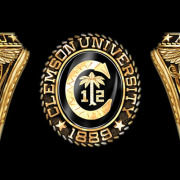Dr. Jerry Reel, HA ’00
Clemson’s historian since 2002, Jerry Reel has quite a history with the university himself. His career at Clemson went from potentially short-lived to one as honored professor and academic leader for 50 years. The New Orleans native began putting down his roots in Clemson when, shortly after earning his bachelor’s degree in art history and literature and master’s in history from Mississippi Southern College (now the University of Southern Mississippi). He accepted a faculty position with Clemson in 1963. He was an instructor, then quickly advanced to assistant and associate professor, before being named professor of history in 1971. By then, he had become hooked on Clemson life. He is active in Fort Hill Presbyterian Church and served as adviser to Pi Kappa Alpha fraternity for more than 25 years. Students nominated him as a Clemson University Alumni Master Teacher in 1975.
“Our plan was to just stay here long enough to get my research for my Ph.D. finished,” Reel recalled. “I was going to go to England in 1964, do my research there, come back, do writing and translating, and then, hopefully, get my Ph.D. and go off to some other place. And here we still are.”
He earned his doctorate in British medieval history from Emory University in 1967. Reel was named dean of undergraduate studies in 1979 and two years later was promoted to vice provost and dean of undergraduate studies, a position he held until 1992 when he became senior vice provost. Reel stepped down from that position in 2003 and became professor emeritus. He earned the South Carolina Governor’s Award in the Humanities in 2011.
Since 1978, Reel has taught a freshman one-hour-per-semester class and given more than 500 speeches about Clemson University’s history to various groups and organizations. It is his love for Clemson that has led the Medallion winner to write a monograph and two books detailing the history of the university. He also contributed to two others. An honorary Clemson alumnus, Reel has direct Tiger “orange bloodlines” throughout his family. His wife, Edmee, holds a master’s degree from Clemson, and all three of his children, two sons-in-law and a daughter-in-law are Clemson alumni. One grandson is a current Clemson student.
“I am overwhelmed, and slightly embarrassed, by this honor,” Reel said. “Typically, very important alumni win this award. It’s not something that a college teacher normally wins. So I am very honored, on behalf of all the people who have contributed to the history of Clemson University.”


